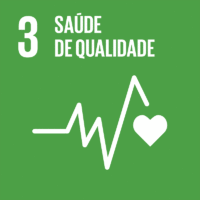Ciência_Iscte
Publicações
Descrição Detalhada da Publicação
Título Revista
IEEE Transactions on Computational Imaging
Ano (publicação definitiva)
2020
Língua
Inglês
País
Estados Unidos da América
Mais Informação
Web of Science®
Scopus
Google Scholar
Esta publicação não está indexada no Overton
Abstract/Resumo
This article demonstrates for the first time, both numerically and experimentally, the feasibility of radar-based microwave imaging of anthropomorphic heterogeneously dense breasts in prone position, requiring no immersion liquid. The dry, contactless approach greatly simplifies the setup, favors patient comfort, and further avoids lengthy sanitation procedures after each exam. We use a radar-type technique with the antennas distributed in cylindrical configuration around the breast phantom. The reflectivity map is reconstructed using a wave-migration algorithm in the frequency domain. This article presents new developed strategies to cope with the challenges of a dry setup, namely increased skin artifact due to the concomitant absence of matching liquid and nonuniform breast shape. We propose an iterative and adaptive algorithm based on singular value decomposition that effectively removes the skin backscattering under the abovementioned conditions. It is compatible with automatic processing, and computationally fast. One of its inputs is the breast three-dimensional surface information, and its distance to the antennas, all obtained automatically from a proposed low-cost procedure based on a webcam. The imaging method is reasonably resilient to the presence of fibroglandular tissues, and to uncertainties of tissue permittivity. Another tackled challenge is the miniaturization of the antenna in air, which is achieved with an optimized balanced antipodal Vivaldi of the same size as counterparts used in dense immersion liquids. Finally, all the building blocks are combined to demonstrate experimentally the overall dry system performance, with very good detection of the tumor at three different positions in the breast, even in low-contrast scenarios.
Agradecimentos/Acknowledgements
--
Palavras-chave
Artifact removal,Balanced antipodal Vivaldi antenna (BAVA),Breast surface estimation,Broadband antenna,Dry imaging setup,Heterogeneous breast imaging,Inverse problem,Medical microwave imaging (MWI),Phantom,Singular value decomposition (SVD),Skin backscattering,Cascade transmission line,Wave-migration
Classificação Fields of Science and Technology
- Matemáticas - Ciências Naturais
- Ciências da Computação e da Informação - Ciências Naturais
- Outras Engenharias e Tecnologias - Engenharia e Tecnologia
- Engenharia Eletrotécnica, Eletrónica e Informática - Engenharia e Tecnologia
Registos de financiamentos
| Referência de financiamento | Entidade Financiadora |
|---|---|
| PTDC/EEI-TEL/30323/2017 | Fundação para a Ciência e a Tecnologia |
| UID/EEA/50008/2019 | Fundação para a Ciência e a Tecnologia |
Contribuições para os Objetivos do Desenvolvimento Sustentável das Nações Unidas
Com o objetivo de aumentar a investigação direcionada para o cumprimento dos Objetivos do Desenvolvimento Sustentável para 2030 das Nações Unidas, é disponibilizada no Ciência_Iscte a possibilidade de associação, quando aplicável, dos artigos científicos aos Objetivos do Desenvolvimento Sustentável. Estes são os Objetivos do Desenvolvimento Sustentável identificados pelo(s) autor(es) para esta publicação. Para uma informação detalhada dos Objetivos do Desenvolvimento Sustentável, clique aqui.

 English
English



